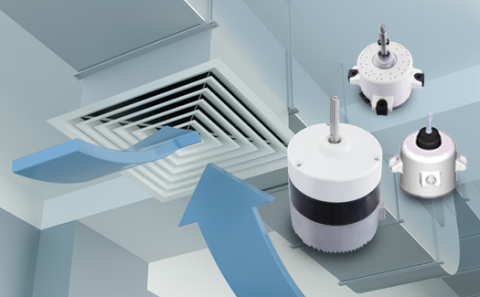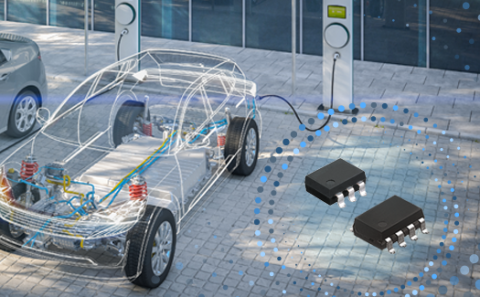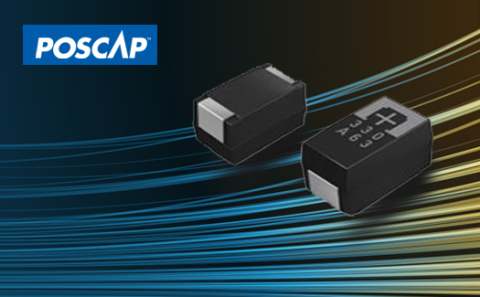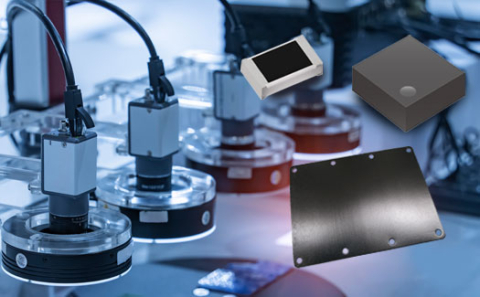
PIR Motion Sensors Technology for Low Power or Line Power Applications and Lens Options
Published on- Sensors
Choosing the right PIR Sensor based on application requirements may not always be so simple. PIR Sensors suitable for low power applications require a low current consumption, whereas PIR Sensors for line power applications would need a standard current consumption. Learn more about PIR Sensors' operating principle, current consumption, output, and lens options available from Panasonic.
PIR Sensor Operating Principle
Panasonic Passive Infrared or PIR Motion Sensors provide simplified circuitry with a fully integrated Pyroelectric sensor design. Panasonic’s PIR Motion Sensors Technology offers two different series options. The EKMB Series is suitable for low power applications whereas and the EKMC Series is for line power applications. The EKMB Series and EKMC Series PIR Sensors combine easy integration, superior detection, high reliability, and environment-friendly materials.
How is Infrared Light Detected?
Pyroelectric Infrared (PIR) detectors convert the changes in incoming infrared light to electric signals. Pyroelectric materials are characterized by having spontaneous electric polarization, which is altered by temperature changes as infrared energy is absorbed in a thin chip of the pyroelectric material and illuminates the elements. This current can be then be detected in an external circuit.
PIR Sensors are a passive device and only receives light. An optical filter allows the transmission of infrared light with wavelengths greater than 5 micrometers. As a frame of reference, the human body typically emits a wavelength of around 10 micrometers. After the Infrared light passes through the filter, it is absorbed by the pyroelectric elements.
Quad Element Arrangement
Panasonic's PIR Sensors contain four elements that are polarized to create positive and negative detection zones. As an element becomes saturated, it converts the light into a small positive or negative analog voltage signal. Since this voltage is very small, an integrated circuit inside the sensor is used to amplify the signal. The PIR Sensors then take this amplified analog signal and convert it to a digital signal by using a pre-set threshold voltage programmed inside the ASIC. As the analog voltage goes above the positive or negative threshold values, a digital signal passes through the output of the sensor.
Choosing the Right PIR Sensor for Your Application Requirements
PIR Sensors that are suitable for low power applications such as battery-driven wireless devices require low current consumption. The EKMB Series offers a variety of low current consumption options in both standard and high sensitivity types and is only available as a digital output option. Whereas PIR Sensors for line power or higher power applications would need a standard current consumption. The EKMC Series offers a standard current consumption PIR Sensor that is offered in standard, high, and low detection sensitivities and is available in both digital and analog output types.
Panasonic's PIR Sensors are available in a variety of lens options to better suit your application requirements, chose the right lens option by detection distance, ceiling installation height, field of view, and the number of detection zones needed. These lens types include Standard Detection, Long Distance, Wall Installation, Saturn Lens (Standard and Slight Detection), Wide Field of View, High Density/Long Distance, Slight Motion, Low Profile, Wide Area Detection, and Ultra Slight Motion types.
PIR Sensors for Low Power Applications
EKMB Series: Suitable for battery-driven wireless equipment
- Low Current Consumption, available in 1μA, 2μA, 6μA, and 6μA high detection sensitivity options
- Digital Output
PIR Sensors for Line Power Applications
EKMC Series: Suitable for battery-free devices
- Standard Current Consumption of 170 μA and available in standard, high and low detection sensitivities
- Digital and Analog Output
Choosing a PIR Sensor Lens Type
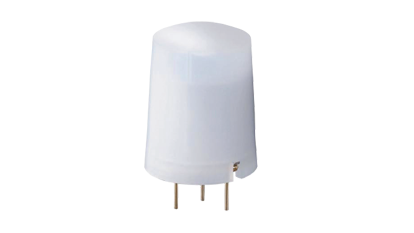
Standard Detection
Detection Distance*: up to 5m
Ceiling Installation Height**: 3m
Field of View: 106° x 97°
Detection Zones: 64
* ∆T ≥ 4°C › Object speed: 1m/s › Object size: 700 x 250mm › Crossing 2 detection zones
** The sensitivity of passive infrared sensors is influenced by environmental conditions, so a performance evaluation test under representative conditions is recommended

Long Distance
Detection Distance*: up to 12m
Ceiling Installation Height**: 7m
Field of View: 108° x 99°
Detection Zones: 92
* ∆T ≥ 4°C › Object speed: 1m/s › Object size: 700 x 250mm › Crossing 2 detection zones
** The sensitivity of passive infrared sensors is influenced by environmental conditions, so a performance evaluation test under representative conditions is recommended

Wall Installation
Detection Distance*:
- up to 12m (1st step lens)
- up to 6m (2nd step lens)
- up to 3m (3rd step lens)
Field of View: 56° x 112°
Detection Zones: 68
* ∆T ≥ 4°C › Object speed: 1m/s › Object size: 700 x 250mm › Crossing 2 detection zones. The sensitivity of passive infrared sensors is influenced by environmental conditions, so a performance evaluation test under representative conditions is recommended.
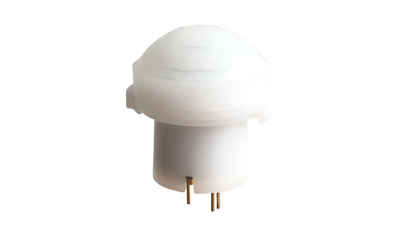
Saturn (Standard & Slight)
Detection Distance*: up to 2.2m 3.1m
Ceiling Installation Height**: 3m
Field of View :
- Slight Motion Area: 44° x 44°
- Standard Motion Area: 91° x 91°
Detection Zones:
- Slight Motion Area: 36
- Standard Motion Area: 48
* ∆T ≥ 4°C › Object speed: 0.5m/s (slight motion area) › Object speed: 1m/s (standard motion area) › Object size: 200 x 200mm (slight motion area) › Object size: 400 x 200mm (standard motion area) › Crossing 1 detection zone (slight motion area) › Crossing 2 detection zones (standard motion area)
** The sensitivity of passive infrared sensors is influenced by environmental conditions, so a performance evaluation test under representative conditions is recommended
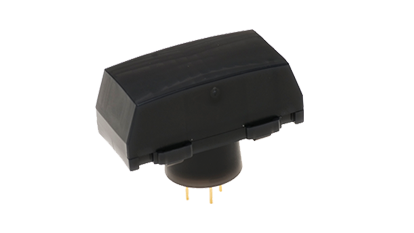
Wide Field of View
Detection Distance*: up to 5m
Field of View :
- Area A: 122° x 35°
- Area B: 150° x 20°
Detection Zones:
- Area A: 88
- Area B: 16
* ∆T ≥ 4°C (Area A) › ∆T ≥ 8°C (Area B) › Object speed: 1m/s › Object size: 700 x 250mm › Crossing 2 detection zones. The sensitivity of passive infrared sensors is influenced by environmental conditions, so a performance evaluation test under representative conditions is recommended.

High Density Long Distance Lens
Detection Distance*: up to 12m - 14.5m
Ceiling Installation Height**: 12m
Field of View: 69° x 69°
Detection Zones: 128
* ∆T ≥ 4°C › Object speed: 1m/s › Object size: 700 x 250mm › Crossing 2 detection zones
** The sensitivity of passive infrared sensors is influenced by environmental conditions, so a performance evaluation test under representative conditions is recommended
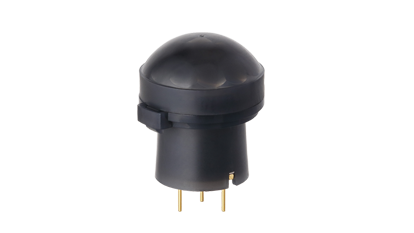
Slight Motion
Detection Distance*: up to 2.5m - 4m
Ceiling Installation Height**: 3m
Field of View: 104° x 104°
Detection Zones: 112
* ∆T ≥ 4°C › Object speed: 0.5m/s › Object size: 200 x 200mm › Crossing 1 detection zone
** The sensitivity of passive infrared sensors is influenced by environmental conditions, so a performance evaluation test under representative conditions is recommended

Low Profile
Detection Distance*: up to 5m
Ceiling Installation Height**: 3m
Field of View: 110° x 110°
Detection Zones: 32
* ∆T ≥ 4°C › Object speed: 1m/s › Object size: 700 x 250mm › Crossing 2 detection zones
** The sensitivity of passive infrared sensors is influenced by environmental conditions, so a performance evaluation test under representative conditions is recommended
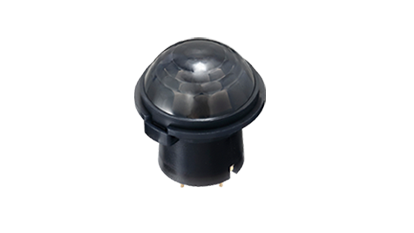
Wide Area Detection
Detection Distance*: up to φ10.8m
Ceiling Installation Height**: 2.5m
Field of View: 130° x 130°
Detection Zones: 208

Ultra Slight Motion
Detection Distance*: up to φ6.7m
Ceiling Installation Height**: 2.5m
Field of View: 107° x 107°
Detection Zones: 200
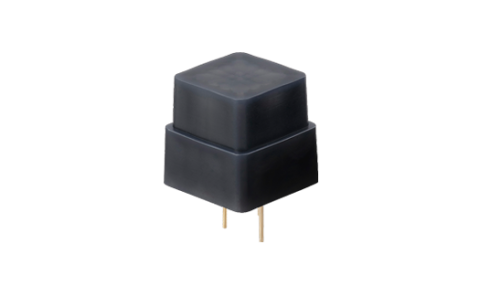
Flat Square
Detection Distance*: up to 5m
Ceiling Installation Height**: 3m
Field of View: 115° x 115°
Detection Zones: 40
* ∆T ≥ 4°C › Object speed: 1m/s › Object size: 700 x 250mm › Crossing 2 detection zones
** The sensitivity of passive infrared sensors is influenced by environmental conditions, so a performance evaluation test under representative conditions is recommended
PIR Motion Sensor Applications
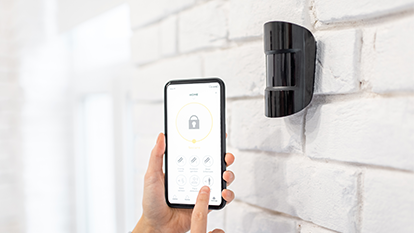
A wide variety of applications suitable for Panasonic’s PIR Motion Sensors include:
- Lighting Controls
- Thermostats and HVAC Systems
- Smart Home and IoT
- Vending Machines
- Lavatories/Fitting Rooms
- Private Office Spaces
- IP Cameras and Surveillance Systems
- Digital Signage and much more!


